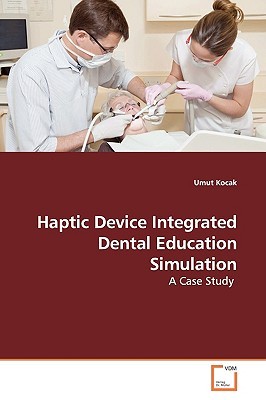
- We will send in 10–14 business days.
- Author: Umut Kocak
- Publisher: VDM Verlag
- ISBN-10: 3639136977
- ISBN-13: 9783639136975
- Format: 15.2 x 22.9 x 0.6 cm, softcover
- Language: English
- SAVE -10% with code: EXTRA
Reviews
Description
Virtual Reality (VR) applications in medicine had significant improvements. 3D visualization of various anatomical parts using advanced medical scanner images, anatomy education, surgery operation simulation, virtual simulator for laparoscopic skills, virtual endoscopy, psychotherapy and rehabilitation techniques are some of the VR applications in medicine. Integration of the haptic devices into VR applications increased the quality of the systems. By using haptic devices, the user can not only feed information to the computer but can receive information from the computer in the form of a felt sensation on some part of the body. In this study a method to develop a dental education simulator supported by haptic feedback is described and the evaluation studies held with dentists are presented.
EXTRA 10 % discount with code: EXTRA
The promotion ends in 16d.19:27:44
The discount code is valid when purchasing from 10 €. Discounts do not stack.
- Author: Umut Kocak
- Publisher: VDM Verlag
- ISBN-10: 3639136977
- ISBN-13: 9783639136975
- Format: 15.2 x 22.9 x 0.6 cm, softcover
- Language: English English
Virtual Reality (VR) applications in medicine had significant improvements. 3D visualization of various anatomical parts using advanced medical scanner images, anatomy education, surgery operation simulation, virtual simulator for laparoscopic skills, virtual endoscopy, psychotherapy and rehabilitation techniques are some of the VR applications in medicine. Integration of the haptic devices into VR applications increased the quality of the systems. By using haptic devices, the user can not only feed information to the computer but can receive information from the computer in the form of a felt sensation on some part of the body. In this study a method to develop a dental education simulator supported by haptic feedback is described and the evaluation studies held with dentists are presented.


Reviews